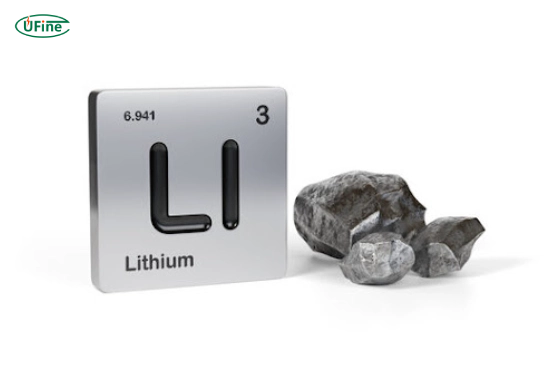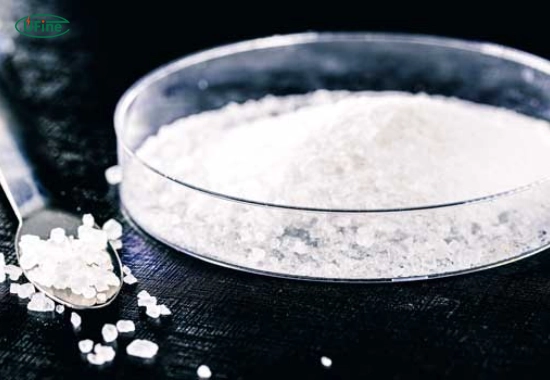What is the difference between lithium and lithium salts in battery manufacturing?
Answer: Lithium is a pure metal element, while lithium salts are stable chemical compounds used in battery materials. The key difference lies in their form and application in lithium-ion battery production.
In the world of lithium-ion batteries, a common question arises:
Is there a difference between lithium and lithium salts?
Absolutely. Understanding this difference is essential for anyone working in or interested in battery technology. Knowing how lithium and its salts behave and function can impact everything from performance to cost, energy storage systems, and electric vehicles.
This article is your complete guide to lithium vs lithium salts — what they are, how they’re used, and why this distinction matters in the battery industry.
Part 1. What is lithium?
Lithium is a naturally occurring chemical element with the symbol Li and atomic number 3. It’s a soft, silver-white metal and is the lightest metal known to science.
Most importantly for battery manufacturers, lithium is:
- Highly reactive
- Has a low atomic mass
- Excellent for electrochemical applications
However, pure lithium metal is rarely used directly in its elemental form in batteries due to its high reactivity with air and moisture. This makes it both challenging to store and dangerous to handle in large-scale production.
Artikel Terkait: Where Do Lithium Batteries Come From?
Part 2. What are lithium salts?
Lithium salts are chemical compounds made when lithium metal reacts with other elements such as fluorine, oxygen, chlorine, or phosphorus. These salts are much more stable than pure lithium and are the primary form of lithium used in battery materials.
Common lithium salts in battery manufacturing include:
- Lithium carbonate (Li₂CO₃)
- Lithium hydroxide (LiOH)
- Lithium hexafluorophosphate (LiPF₆)
- Lithium chloride (LiCl)
Each salt has different properties that make it suitable for specific roles in lithium battery chemistry.
Part 3. Why are lithium salts essential in battery production?
In battery manufacturing, lithium salts are essential for the following components:
1. Cathode materials
- Lithium salts like lithium carbonate and lithium hydroxide are used to manufacture lithium metal oxides, including:
- Lithium Nickel Manganese Cobalt Oxide (NMC)
- Lithium Iron Phosphate (LFP)
- Lithium Cobalt Oxide (LCO)
2. Electrolytes
- Lithium hexafluorophosphate (LiPF₆) is lithium-ion batteries’ most widely used electrolyte salt.
- It helps transport lithium ions between the anode and cathode during charging and discharging.
3. Battery stability and performance
- The choice of lithium salt affects:
- Cycle life
- Thermal stability
- Charging speed
- Safety
Part 4. How is lithium converted into lithium salts?
Lithium is typically extracted from two primary sources:
- Brine pools (e.g., salt flats in South America)
- Hard rock mining (e.g., spodumene in Australia)
Once extracted, lithium undergoes chemical processing to convert it into usable salts. For example:
- Lithium carbonate is made by reacting lithium concentrate with sodium carbonate.
- Lithium hydroxide is produced by reacting lithium carbonate with lime (Ca(OH)₂).
- LiPF₆ is synthesized through complex chemical reactions involving phosphorus pentachloride and lithium fluoride.
The final product is refined to battery-grade purity, often reaching 99.5% or higher, critical for consistent battery performance.
Part 5. What’s the key difference between lithium and lithium salts?
Short answer: Lithium is a metal element, while lithium salts are chemical compounds used in industrial applications, especially batteries.
| Property | Lithium Metal | Lithium Salts |
|---|---|---|
| Form | Pure element (Li) | Compounds (e.g., Li₂CO₃, LiOH, LiPF₆) |
| Stability | Highly reactive | More chemically stable |
| Use in batteries | Limited (mainly some solid-state) | Widely used in cathodes & electrolytes |
| Handling requirements | Strict safety controls | Easier to store and transport |
| Role in battery chemistry | Direct lithium source | Functional material in battery components |
Understanding this distinction helps battery producers choose the right material for their application.
Part 6. Why not use pure lithium metal in all batteries?
While lithium metal offers high energy density, it also presents serious safety risks:
- Reacts violently with moisture and air
- Can form dendrites, which cause short circuits in batteries
- Requires special handling and storage solutions
That’s why most current lithium-ion batteries use lithium salts, which are safer and more stable, especially for commercial and consumer applications.
However, research into solid-state batteries may bring lithium metal back into the spotlight due to its potential for higher energy storage.
Part 7. Which lithium salt is best for batteries?
There is no “one-size-fits-all” answer. The best lithium salt depends on the battery type and the intended use.
For cathodes:
- Lithium carbonate is popular for LFP and NMC cathodes.
- Lithium hydroxide, like NCA and some NMC formulations, is preferred for high-nickel cathodes.
For electrolytes:
- LiPF₆ remains the industry standard due to its balance of performance and cost.
- Alternatives like LiFSI and LiTFSI are gaining attention for their thermal and chemical stability in next-gen batteries.
Part 8. How are lithium salts stored and handled in factories?
Battery-grade lithium salts are stored in dry, controlled environments to prevent:
- Moisture absorption (many salts are hygroscopic)
- Contamination, which can reduce battery performance
- Chemical degradation
Manufacturers use sealed containers, dry rooms, and specialized equipment to ensure maximum purity.
Part 9. Are lithium salts used outside of batteries?
Yes, but in this article, we focus on their industrial and battery-related uses. While lithium salts do have applications in pharmaceuticals and glassmaking, these are secondary markets compared to their dominant role in energy storage.
We won’t discuss medical or ceramic uses here for clarity and relevance to battery manufacturing.
Part 10. The future of lithium salts in energy storage
The demand for lithium salts is skyrocketing as the world shifts toward renewable energy and electric vehicles. Key trends include:
- Solid-state batteries using new lithium salts or lithium metal
- Recycling technologies to recover lithium salts from used batteries
- Advanced electrolytes with higher efficiency and thermal stability
- Localized supply chains to secure lithium salt availability for manufacturers
Innovations in lithium extraction and salt processing will shape the future of sustainable energy systems.
Part 11. FAQs about lithium and lithium salt
Is lithium the same as lithium salt in batteries?
No. Lithium metal is a pure element, while lithium salts are chemically stable compounds in battery components.
Which lithium salt is used in electrolytes?
The most common is lithium hexafluorophosphate (LiPF₆), used in nearly all commercial lithium-ion batteries.
Why are lithium salts preferred over pure lithium in manufacturing?
Lithium salts are more stable, safer to handle, and suited for high-purity applications like cathode and electrolyte production.
Can lithium salts be recycled from old batteries?
Yes. Recycling processes can recover lithium salts from used batteries, helping to reduce environmental impact and reliance on mining.
Are new lithium salts being developed?
Yes. Researchers are exploring salts like LiTFSI and LiFSI for improved performance and thermal stability in next-gen batteries.
Related Tags:
More Articles

The Evolution of Ring Battery Pack Technology in Lithium Battery Manufacturing
Ring battery packs are reshaping lithium battery tech. Discover their evolution, key uses, and why they matter for the future of energy storage.
What You Need to Know About AA 3.6V Lithium Battery
Learn all about AA 3.6V lithium batteries—voltage, size, capacity, uses, and the best replacements. Discover why they’re powerful, and highly reliable.
What Are Lithium Salts and Why They Matter in Battery Electrolytes
Lithium salts in electrolytes are key to battery performance, powering everything from phones to EVs and shaping the future of clean energy.
Lithium AAA Battery Guide: Power, Performance & Chargers
Explore lithium AAA batteries—voltage, capacity, weight, top brands, and more. Learn how to choose the best battery for your device and why it really matters.
How to Calculate Watts, Volts, and Amps (With Simple Formulas and Examples)
Learn how to calculate watts, volts, and amps for lithium batteries with simple formulas and examples, ideal for EVs, solar, and energy systems.





